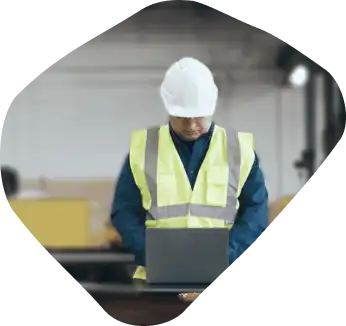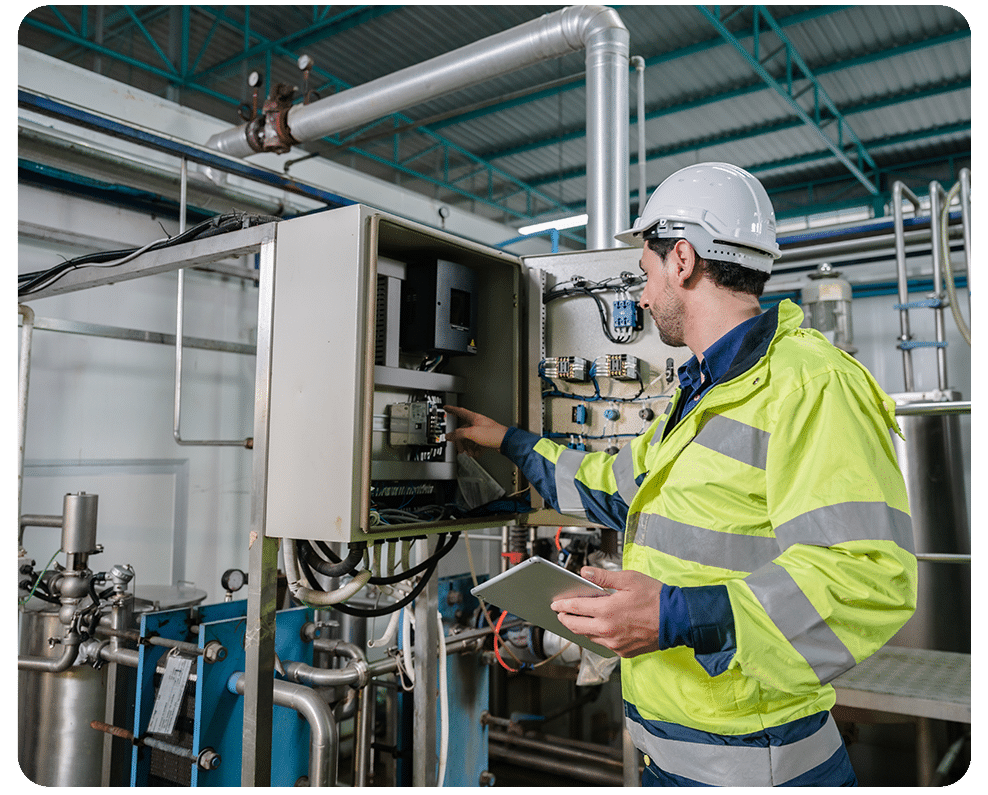March 20, 2024 6 min read

Complete Guide to Building Automation Systems
Industry:
Solution:

The facility management industry is going through a period of rapid digital transformation. New technologies are driving efficiency, improving energy management, and changing how facilities are maintained and operated. In this blog, we’ll review everything you need to know about Building Automation Systems (BAS) and how they are providing centralized control and intelligence for facilities technicians.
What is Building Automation?
Building Automation is a sophisticated type of facility management software that controls building systems, including heating, ventilation, HVAC, lighting, security, and more.
The goal is to create a centralized and intelligent network that enables seamless communication and coordination between these systems. By leveraging sensors, controllers, and automation software, building automation systems enhance operational efficiency, reduce energy consumption, and provide real-time insights into the performance of critical building components.

What is a Building Automation System (BAS)?
Building Automation Systems (BAS) are the tools that make building automation possible. BAS tools are intricate networks of hardware, software, and communication protocols designed to centralize control and monitoring of various building systems.
Here’s a closer look at the components that make up a BAS:
- Sensors and Actuators. BAS relies on an array of sensors to collect data on temperature, humidity, occupancy, and more. Actuators respond to the data collected by adjusting system components, such as adjusting thermostat settings or controlling lighting levels.
- Controllers. Centralized controllers process data from sensors and make decisions based on programmed algorithms. These controllers act as the brains of the system, orchestrating responses to maintain optimal building conditions.
- Communication Networks. BAS uses communication protocols to facilitate seamless data exchange between various components. This network connectivity ensures that different systems can work together in harmony.
What is the Difference Between BAS and BMS?
If you’ve heard of Building Management Systems (BMS), you might be wondering what the difference is between building management systems and building automation systems.
The key difference is in the goal.
Building management is more focused on the operational aspects of FM. These tools are geared towards making building monitoring and maintenance easier and more centralized.
Building automation systems, on the other hand, are geared towards maximizing energy efficiency. The inherent nature of automating building systems is also to reduce the time and resources from FM techs by automating certain tasks.

Types of Building Automation Systems
There are many different types of Building Automation Systems out there. Some control multiple different building systems, while others might be more specified.
BAS tools control things like:
- HVAC. BAS optimizes heating, ventilation, and air conditioning (HVAC) systems to maintain comfort while optimizing energy use. This includes adjusting temperature settings, controlling airflow, and scheduling HVAC operations based on occupancy.
- Lighting. BAS manages lighting systems to enhance energy efficiency by adjusting lighting levels based on natural light availability, occupancy, and time of day.
- Security and Access. BAS integrates security systems, including access control, surveillance, and alarms. This enhances safety by coordinating responses to security events and monitoring access to the building.
Benefits of Using Building Automation Systems
There are three primary benefits of switching to BAS in facility management:
- Energy Efficiency. The U.S. Department of Energy estimates that commercial buildings’ energy use costs $190 billion every year. BAS optimizes resource usage, reducing energy consumption and operational costs. Smart control of HVAC and lighting systems ensures energy is utilized only when needed.
- Operational Efficiency. Centralized control simplifies facility management tasks, leading to more efficient operations. Remote monitoring capabilities enable quick responses to issues and preventive maintenance.
- Occupant Comfort and Safety. BAS enhances occupant comfort by maintaining ideal environmental conditions. Integrated security features contribute to a safer building environment.
Key trends in facility management are driving the industry to become more focused on sustainability and operational efficiency. BAS is a key component of that, making training your workforce on this emerging technology critical.

How to Train Your Workforce on BAS
If you’re ready to start training your workforce on Building Automation Systems—or need access to more up-to-date training—partnering with a company like Vector Solutions is a great place to start.
Online facilities training is a great way to build a foundation of knowledge for a growing and diverse workforce. This then allows you to spend in-person (or on the job) training on reinforcing knowledge and putting skills into practice. This combination approach to training your workforce is called “Blended Learning” and is considered the most effective method of training by Learning and Development experts.
A Learning Path for New and Current FM Employees
Takes the guesswork out of designing your training program by providing pre-selected courses from Vector’s extensive training catalog, Facilities Management, and Maintenance Library.
Download Template
Vector Solutions’ Building Automation Courses
Vector Solutions offers numerous Building Automation and energy management courses that can help your workforce learn the basics of BAS.
A few examples include:
- Direct Digital Controls (DDC) Building Automation Basics: This course reviews how centralized programming and control can optimize building energy use and occupant comfort. This course is interactive and covers how maximum use of BAS systems can provide cost-saving opportunities for your facility.
- Building Automation Systems (BAS) Architecture: This interactive course discos the BAS topology and how these systems work.
- Building Automation Systems (BAS) Operations: This course is ideal for building maintenance, HVAC techs, and facility managers. It covers the fundamentals of BAS equipment and how employees can use it to identify problems and quickly find solutions.
- Pneumatic Building Automation Basics: In this course, learners will get an introduction to pneumatic systems and how the right control systems can be more effective and efficient.
- Energy Management Basics: Buildings account for 75% of electricity consumed in the U.S. In this course, learners will review key terminology and the basics of building energy management.
The Power of Online Maintenance Training Guide
Uncover the impacts on hiring, skills development, performance and productivity
View Guide
Want to learn more about our extensive facilities maintenance and management eLearning library? Request a demo today.








